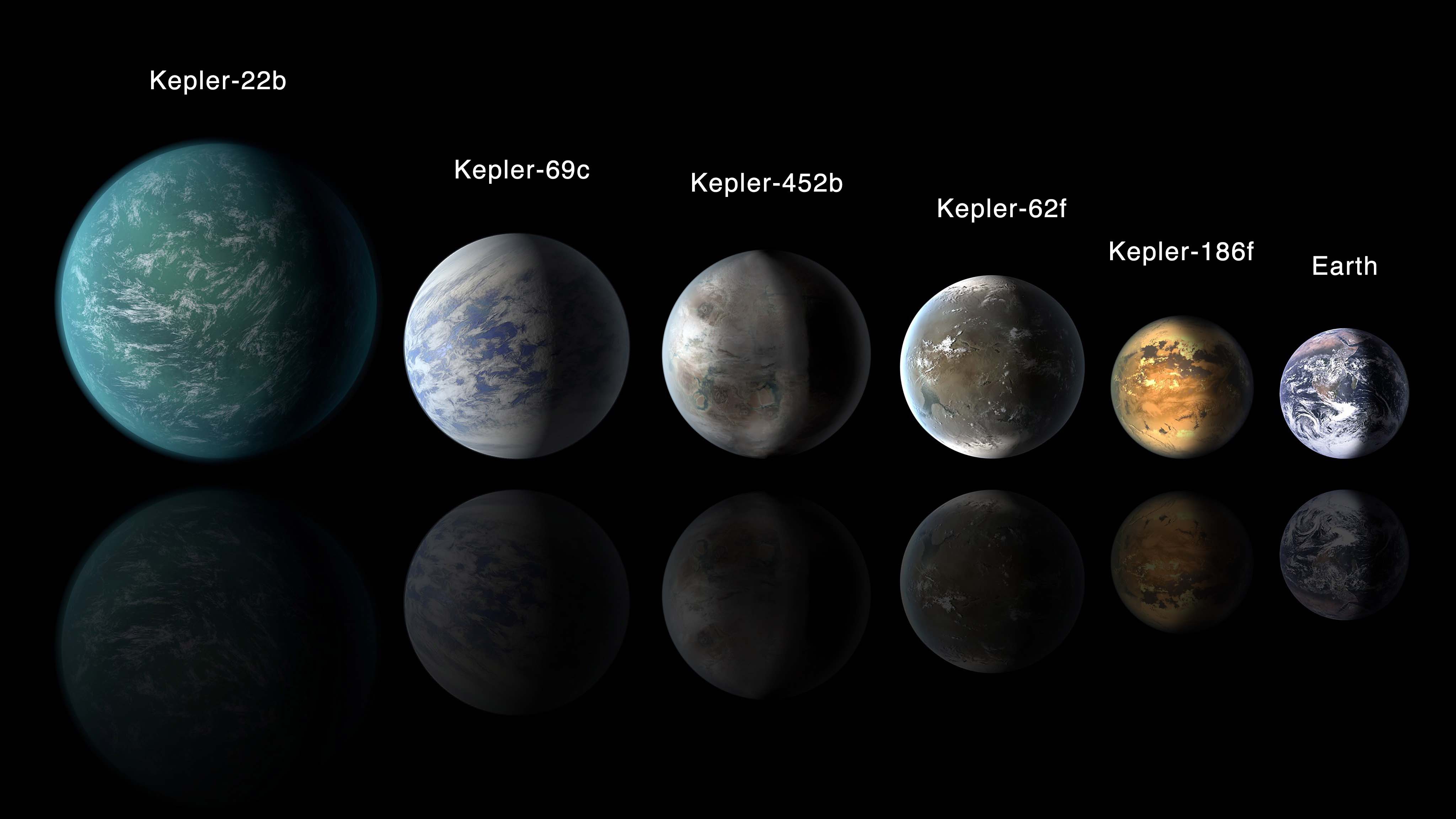

[Image source: nasa.gov]
Exoplanets are other planets which rotate around distant stars. Some exoplanets can be as big as HD100546b(largest exoplanet ever discovered). Some can be as small as Kepler-37b. Some of them can support life like Kepler-452b and Kepler-438b. This section will tell you about the exoplanets and how they are unique in so many ways.
The hot jupiters are Jupiter that go around their star very close to their star, even closer than mercury! The temperature on a hot Jupiter is hotter than venus. Some hot jupiters are larger than Jupiter which is really huge. Some can be almost the the size of saturn,but larger. The first exoplanet orbiting a G-type or sunlike star is 51 Pegasi b. Our star, the Sun is a G2V type and the 51 Pegasi is a G5V type. G means the class of the star and V means luminosity. 51 Pegasi is a little-bit massive than the Sun. Here are some examples of hot jupiters: Kepler 7b, 51 Pegasi- b and WASP-19b.

[Image source: nasa.gov]
Have you heard about the astronomical term called “puffy planets.” It sounds really funny! “Puffy Planets” are planets that have an enormous size ,but have very low density. One is WASP-17b which is 1.9 times the size of Jupiter,but as dense as a foam in coffee cup. They are like “hot saturns” since they have a very low density, but many times bigger. These planets have hydrogen and helium which are really light elements. Puffy planets are really hot jupiters. It just that it is really big in size, but really light in density. One is WASP-17b which is one of the largest exoplanets we have discovered so far.

[Image source: nasa.gov]
These type of exoplanets are like our planet. They can be as small as mercury and almost as big as Neptune. Some of them can be like Earth. These type of planets are called “Super earths”. In the future people are going to move into a different planet. We have found many Earth like planets, but it is really hard to choose from them because of the climate and the temperature and the air. It also matters about how long it takes to orbits its star and how long it takes to rotate on its axis. It can also on the star if it gives a lot of radiation. Gliese 581 is a tidally locked which means a face of the planet always faces to the star and the other always faces away from the star. The only place lifeforms can survive is in the middle of the planet. Kepler 37-b is an exoplanet which is smaller than mercury. BD+20954-b is the largest terrestrial planet ever discovered. It is 2.3 times the radius of the Earth and about 16 times the mass of Earth. It is about the size of Neptune! That is really big.

[Image source: nasa.gov]
Haven't you heard about the super earths or, what about super neptunes? One of them is HAT-P-11b. It is bigger than Neptune but is smaller than uranus. That is cool don't you think? It kind of cool to see a Super neptunes, but they are very rare.

[Size comparison of HAT-P-11b (gray) with Neptune.]
[Image source: wikipedia.org under Creative Commons License and Attribution-Share Alike 4.0 International ]
So far you have learned about the exoplanets. There is still lots of other amazing things in space. When you look up there are not only stars there are planets also.